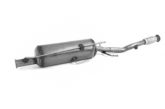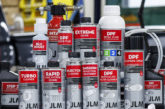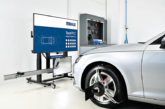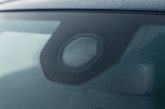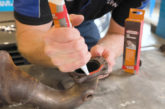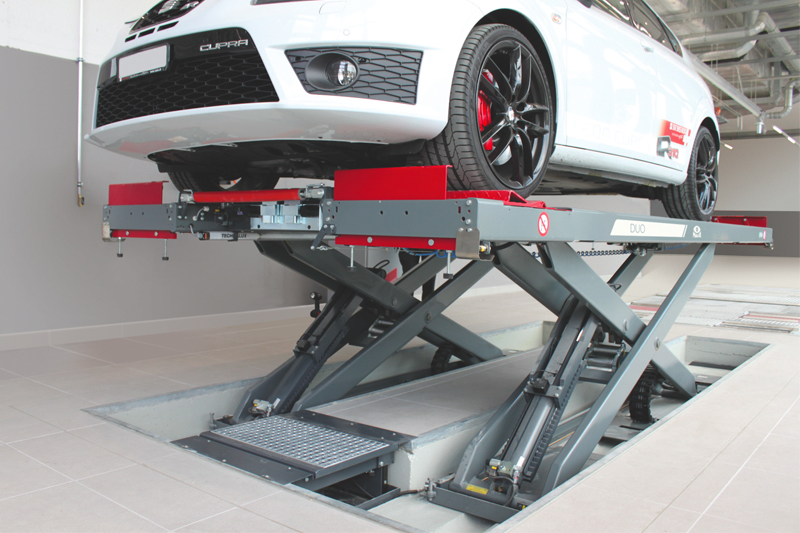
Maha UK discusses its DUO CM lifts, some of its most popular lifts that provide workshops with an ideal platform for inspecting vehicle wheel alignment.
Maha UK provides a range of lifts, with the DUO CM being one of its most sought-after models. Available in various specifications, such as the in-ground ‘U’ model or the above-ground ‘A’ model, it caters to diverse workshop setups. Offered in 4.2 tonne or 5.5 tonne versions, the lifts are capable of handling substantial weights.
Lifts’ role in alignment
Setting suspension geometry according to the manufacturer’s specifications not only extends tyre life and improves fuel efficiency but also ensures a safer driving experience. This is particularly crucial when dealing with collision-damaged vehicles requiring mechanical attention.
Maha UK managing director, Neil Ebbs, emphasised the importance of accurate wheel alignment post-repairs: “If a vehicle has experienced an impact and a technician then replaces its suspension component, for example, the insurance company will want to see ‘all green ticks’ on the end of their wheel alignment report. Suspension repairs or even suspension tuning/lowering may change the geometry of the vehicle. In that case, a lift is going to be vital in supporting a technician in confirming accurate wheel alignment.”
The garage equipment company can collaborate with customers to identify their specific needs. This may include wheel-free jacks for suspending vehicles, corner-weight scales for precise vehicle setups, LED illumination for improved visibility, and mechanical locks for securing vehicles in a level position. Neil referred to compensated sliding plates, which guarantee a lift’s platform is level, regardless of what accessories are fitted: “Often, technicians prefer longer sliding plates (1,465mm long as opposed to 1,060mm) because they then don’t have to change or move anything to cater the needs of different length vehicles.
“For an in-ground installation specifically, there is the option of automatic roll-off protection. Instead of having ‘flaps’ at the end of a lift that hinge up as it comes out of the ground, the lift has an automatic vertical rising end-stop that comes up. When a lift goes all the way down, the plate lowers, and a vehicle can roll on and off. This feature enables the entire length of the platform to be utilised.”
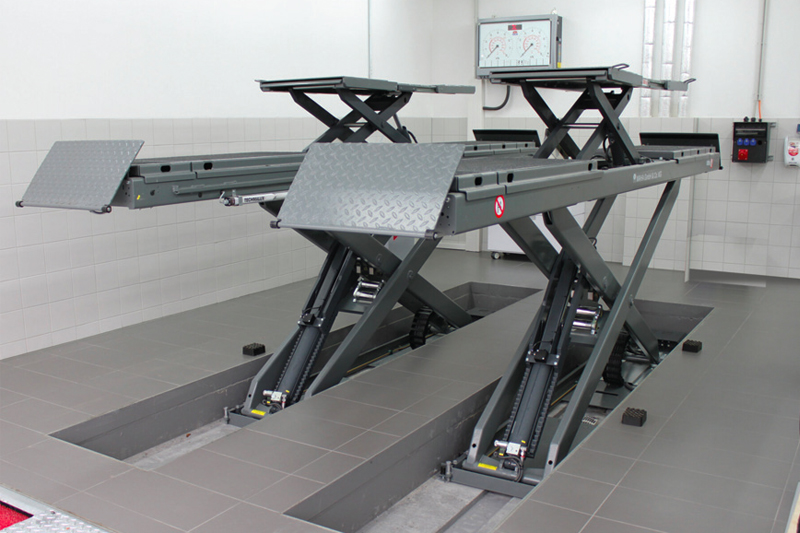
Sticking to safety guidelines
While the DUO CM scissor lift offers, in Maha’s words at least, “versatility, functionality and reliability”, staying safe around them and when the lift is in use is equally important. Here, the firm offers readers of PMM some safety guidelines to follow.
Before using the lift, undergo thorough training on its operation and safety features. Familiarise yourself with the lift’s control panel, emergency stop mechanisms, and safety protocols outlined in the user manual.
Always adhere to the weight capacity specifications. Avoid overloading the lift with vehicles or equipment beyond the lift’s rated capacity, as this can compromise stability and pose safety risks.
Properly position the vehicle on the lift’s platform, ensuring that it is centred and secure. Use wheel locks to prevent unintended movement and mechanical locks to secure the vehicle in place during maintenance procedures.
Conduct routine inspections of the DUO CM lift for any signs of wear, damage, or malfunction. Pay close attention to hydraulic components, lifting mechanisms, and safety devices. Address any issues promptly and schedule regular maintenance as per manufacturer recommendations.
Exercise caution when driving vehicles on and off the lift’s platform. Maintain slow and steady speed, and ensure that the vehicle’s wheels are properly aligned with the lift’s ramps to prevent accidents or damage.
Acquaint yourself with the location and operation of emergency stop buttons and other safety features. Have a clear understanding of emergency procedures in case of power outages, equipment malfunctions, or other unforeseen circumstances.

